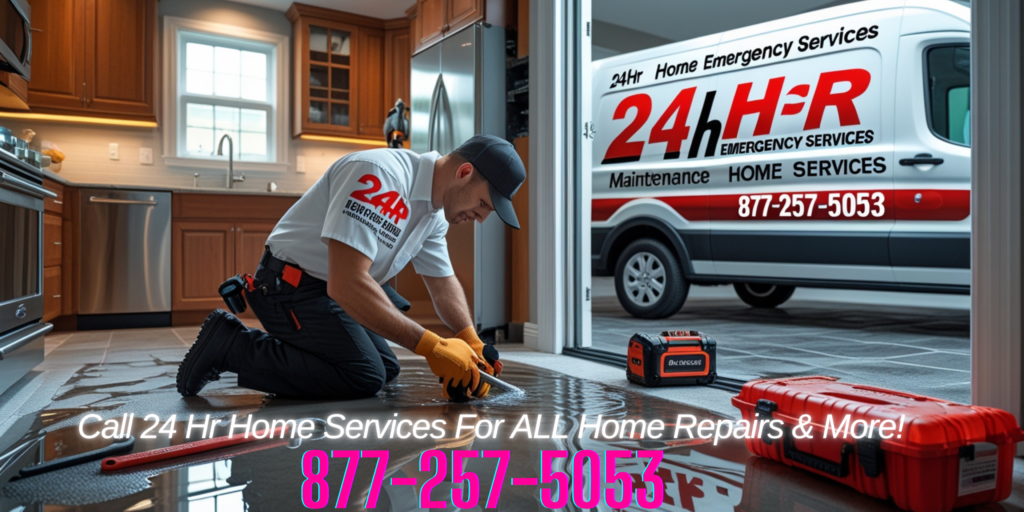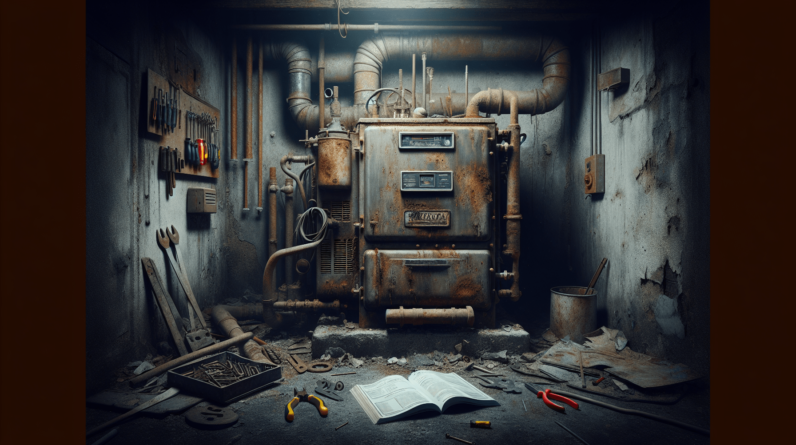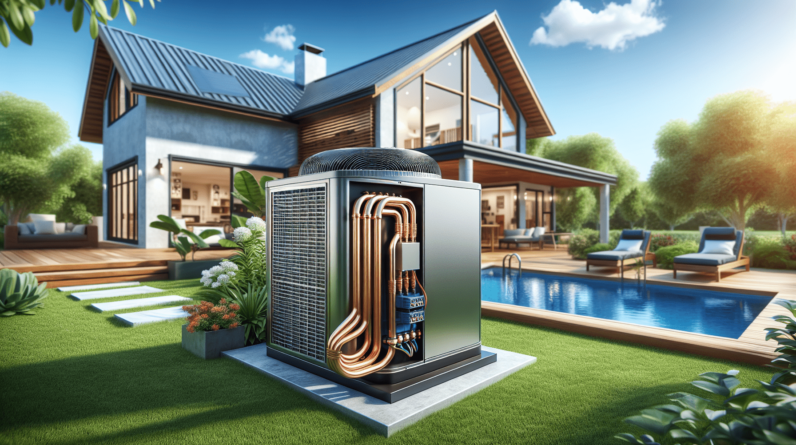
Have you ever experienced a plumbing disaster and wondered if a pipe has burst? It can be quite a stressful situation, but don’t worry, we’ve got you covered. In this article, we will share some useful tips on how to determine if a pipe has burst in your home. From strange noises to water leaks, we will help you become your own plumbing detective, so you can quickly identify and address any pipe-related issues with ease. So, let’s get started and put your worries to rest!
Signs of a Burst Pipe
If you suspect that you have a burst pipe in your home, there are several signs that you can look out for. These signs can help you identify the issue early on and prevent further damage.
Visible Water Damage
One of the most obvious signs of a burst pipe is visible water damage. This can manifest as wet or damp areas on walls, ceilings, or floors. You may notice water stains, discoloration, or even puddles of water. It’s important to pay attention to any changes in your home’s interior, especially if you notice water in places where it shouldn’t be.
Low Water Pressure
Another sign of a burst pipe is a sudden decrease in water pressure. If you turn on a faucet or shower and notice that the water is not flowing as strongly as usual, it could indicate a pipe leak or burst. Low water pressure can be a result of water escaping through a damaged pipe before it reaches your fixtures.
Strange Noises in the Plumbing System
If you hear strange noises coming from your plumbing system, such as banging, knocking, or hissing sounds, it may be a sign of a burst pipe. These noises can occur when water is escaping from a damaged pipe, causing air pockets or increased pressure within the plumbing system. Pay attention to any unusual sounds and investigate them further to determine if a pipe has burst.
Unusual Increase in Water Bill
An unexplained and significant increase in your water bill could also indicate a burst pipe. A burst pipe can cause water to leak continuously, leading to excessive water usage and higher bills. If you notice a sudden spike in your water bill with no corresponding increase in water consumption, it’s essential to investigate the possibility of a burst pipe.
Locating the Burst Pipe
Once you’ve identified the signs of a burst pipe, the next step is to locate the exact point of the damage. Finding the burst pipe’s location is crucial as it helps determine the necessary repairs and minimizes the potential for further damage.
Inspecting the Water Meter
One way to locate a burst pipe is by inspecting the water meter. Start by turning off all water sources in your home and then check the flow indicator on the meter. If it continues to spin, it indicates that water is still flowing and there may be a leak in your plumbing system. By checking the meter and seeing if it is still registering a water flow when all fixtures are off, you can narrow down the location of the burst pipe.
Checking for Wet or Damp Areas
Inspecting your home for wet or damp areas is another effective method of locating a burst pipe. Look for any water stains, wet spots, or moisture accumulation on walls, floors, or ceilings. The presence of water in these areas can help you determine where the leak or burst may be occurring. Focus on areas near plumbing fixtures, such as sinks, toilets, and showers, but don’t forget to check less obvious places like crawlspaces or basements.
Listening for Water Leaks
Sometimes, you can hear the sound of water escaping from a burst pipe. To detect a water leak, turn off all noisy appliances and sources of distraction, and then listen carefully near your plumbing fixtures and walls. If you hear the sound of running water, dripping, or hissing, it’s likely that you have a burst pipe nearby. By using your ears as a tool, you can pinpoint the general area of the burst and facilitate repairs.
Using a Thermal Imaging Camera
A thermal imaging camera is a useful tool for locating burst pipes, especially in areas where they are hidden from plain sight. The camera detects differences in temperature and can identify areas of the wall, ceiling, or floor where the temperature is abnormally high or low. This can indicate the presence of a burst pipe behind the surface. Using a thermal imaging camera can help you identify the exact location of the leak, minimizing the need for unnecessary demolition or guesswork.
Steps to Take When a Pipe Bursts
When a pipe bursts in your home, it’s essential to act quickly to minimize the damage and prevent further complications. By following these steps, you can effectively address the situation.
Turn Off the Water Supply
The first and most crucial step when dealing with a burst pipe is to turn off the water supply. Locate the main shutoff valve, which is usually located near the water meter or where the water line enters your home. Turn the valve clockwise to shut off the water flow. By cutting off the water supply, you can prevent any additional water from leaking and causing further damage.
Open Faucets and Drains
After turning off the water supply, open all faucets and drains in your home to relieve any remaining water pressure. This step is important because it allows any excess water to drain out instead of building up and causing additional damage. Open both hot and cold water faucets, as well as any showerheads or hose bibs. Additionally, remove the drain trap under sinks to ensure proper drainage.
Contain the Water
To prevent water from spreading and causing more damage, it’s crucial to contain the area affected by the burst pipe. Use towels, buckets, or any available materials to absorb and collect the water. If possible, create a barrier using waterproof materials to prevent water from seeping into other areas of your home. Time is of the essence, so act quickly to minimize the potential for structural damage or mold growth.
Call a Professional Plumber
While these initial steps are important, it’s essential to call a professional plumber to assess and repair the burst pipe. A licensed plumber has the knowledge, experience, and tools to handle the situation safely and effectively. They can accurately diagnose the issue, provide expert advice, and perform the necessary repairs to restore your plumbing system. Attempting to fix the burst pipe yourself can potentially worsen the damage or lead to safety hazards.
Common Causes of Burst Pipes
Understanding the common causes of burst pipes can help you take preventive measures and reduce the risk of experiencing this plumbing emergency.
Freezing Temperatures
One of the leading causes of burst pipes is freezing temperatures. When water inside the pipes freezes, it expands, putting pressure on the pipe walls. This increased pressure can cause the pipe to crack or burst. It’s crucial to properly insulate exposed pipes, especially in cold climates, to prevent them from freezing and bursting during winter months.
Corrosion and Aging
Over time, pipes can corrode and deteriorate, especially if they are made of metal. Rust and other forms of corrosion weaken the pipe walls, making them susceptible to bursting. Additionally, aging pipes may develop weak points or develop small leaks that can eventually lead to a burst. Regular inspection and maintenance of your plumbing system can help identify aging or corroded pipes and replace them before they cause major issues.

High Water Pressure
Excessive water pressure can strain the pipes, leading to bursting. If your water pressure is consistently high, it can weaken the pipes over time and eventually cause them to fail. Installing a pressure regulator can help control the water pressure in your home and prevent potential damage to your plumbing system.
Tree Root Intrusions
Tree roots seeking moisture can infiltrate underground pipes, causing blockages or even rupturing the pipes. This is especially common with older clay or concrete pipes that may have small cracks or gaps. Regular tree maintenance, such as trimming roots near your sewer or water lines, can help prevent tree root intrusions and minimize the risk of burst pipes.
Preventing Pipe Bursts
While burst pipes can be a significant inconvenience, there are measures you can take to prevent them from occurring in the first place. By implementing these preventive strategies, you can protect your home from potential water damage and the associated costs of repairs.
Insulating Exposed Pipes
Proper insulation of exposed pipes is crucial, especially in areas prone to freezing temperatures. Insulate pipes in unheated areas, such as basements, crawlspaces, and attics, using pipe insulation sleeves or heat tape. This helps maintain the temperature of the water inside the pipes and prevents them from freezing and bursting during cold weather.
Draining Outdoor Faucets
Before the onset of winter, make sure to drain and disconnect any outdoor hoses or faucets. Leaving water trapped in outdoor pipes can lead to freezing and subsequent bursting. By removing the water source and properly winterizing outdoor plumbing fixtures, you can significantly reduce the risk of burst pipes.
Maintaining a Consistent Temperature
Maintaining a consistent temperature inside your home can help prevent pipes from freezing and bursting. Set your thermostat to a temperature that doesn’t allow the interior to become too cold, especially during freezing weather conditions. Opening cabinet doors under sinks can also promote airflow and prevent pipes from freezing by exposing them to warmer room temperatures.
Regularly Inspecting and Maintaining Plumbing System
Regular inspections and maintenance of your plumbing system are essential to identify potential issues before they escalate. Hire a professional plumber to conduct routine check-ups and address any signs of corrosion, leaks, or weak spots in the pipes. Additionally, schedule regular maintenance tasks such as drain cleaning and inspections of seals, joints, and connections to ensure your plumbing system remains in excellent condition.
Dealing with Burst Pipes in Different Areas
Depending on the location of the burst pipe, the approach to handling the situation may vary. Here are some specific guidelines for dealing with burst pipes in different areas of your home.
Burst Pipe in the Basement
If a pipe bursts in the basement, the first step is to shut off the main water supply to your home. Once the water has been turned off, open any basement windows or doors to increase airflow and help dry out the affected area. Use a wet/dry vacuum or towels to remove standing water, and place fans or dehumidifiers to aid in drying. It’s essential to address the burst pipe promptly and consult a professional plumber for repairs to prevent any further damage.
Burst Pipe in the Kitchen
In the event of a burst pipe in the kitchen, turn off the water supply by shutting off the local shut-off valve under the sink. This will stop the water flow to the affected area while keeping the rest of your home’s water system functioning. Soak up any standing water with towels or a mop, and use a bucket to catch any dripping water. Contact a plumber to evaluate the burst pipe and make the necessary repairs.
Burst Pipe in the Bathroom
If a pipe bursts in the bathroom, the first step is to turn off the water supply to the affected bathroom fixtures. The shut-off valve is usually located under the sink or behind the toilet. Once the water is turned off, mop up any excess water and use towels to dry the area. Ensure proper ventilation by opening windows or using fans, and contact a professional plumber to assess and repair the burst pipe.
Burst Pipe in the Attic
Dealing with a burst pipe in the attic requires caution due to the potential risk of water damage to your home’s structure and electrical components. Before addressing the burst pipe, shut off the water supply to the attic. Ensure your safety by turning off the electricity supply to the affected area. Use buckets or towels to contain the water and minimize additional damage. It’s crucial to contact a professional plumber with experience in handling burst pipes in attic spaces, as these repairs can be more complex.
Potential Dangers and Hazards
Burst pipes pose several dangers and hazards that need to be addressed promptly to protect your home and ensure your safety.
Structural Damage
Water from a burst pipe can damage the structural integrity of your home, leading to weakened walls, ceilings, or floors. It’s crucial to address the burst pipe immediately to prevent further structural damage that may require extensive and costly repairs.
Mold and Mildew Growth
Moisture from a burst pipe can create a perfect environment for mold and mildew growth. Mold spores thrive in damp, dark areas, and can quickly spread throughout your home. Exposure to mold can lead to various health issues, including respiratory problems, allergies, and irritation. By addressing a burst pipe promptly, you can minimize the risk of mold growth and ensure a healthy living environment.
Electrical Hazards
Water and electricity are a dangerous combination. A burst pipe in proximity to electrical wiring or fixtures can pose a significant electrical hazard. If you suspect that a burst pipe has come into contact with electrical components, it’s crucial to turn off the electricity supply to the affected area and seek professional help to ensure your safety.
Contamination of Water Supply
In some cases, a burst pipe can result in the contamination of your water supply. If the burst occurs in a sewer line or near a water source, it can lead to the infiltration of pollutants or harmful substances into your water system. It’s important to avoid using the water until the issue is resolved and the water quality has been tested for safety.
Importance of Timely Repairs
When a pipe bursts in your home, it’s essential to prioritize timely repairs to minimize further damage and ensure a safe and healthy living environment.
Preventing Further Damage
Timely repairs of a burst pipe can prevent further damage to your home’s structure, plumbing system, and belongings. Water can quickly spread and cause extensive damage to walls, ceilings, floors, and personal property. By addressing the burst pipe promptly, you can minimize the risk of additional repairs and associated costs.
Reducing Repair Costs
The longer a burst pipe goes unrepaired, the more extensive the damage and subsequent repairs may be. Promptly addressing the issue can help minimize repair costs by preventing the need for major structural repairs or mold remediation. By investing in timely repairs, you can potentially save money in the long run.
Maintaining a Safe and Healthy Environment
A burst pipe can introduce water and moisture into your home, creating an environment conducive to mold and mildew growth. Prompt repairs can help maintain a safe and healthy living environment by preventing the spread of mold, minimizing the risk of waterborne illnesses, and ensuring proper ventilation and moisture control.
Avoiding Water Wastage
A burst pipe can lead to significant water wastage. By promptly repairing the burst pipe, you can avoid unnecessary water loss and reduce your environmental impact. Conserving water is not only beneficial for the planet but also helps keep your utility bills under control.
Insurance Coverage for Burst Pipes
In the unfortunate event of a burst pipe, having the necessary insurance coverage can provide financial protection and ease the burden of repairs.
Reviewing Homeowner’s Insurance Policy
Review your homeowner’s insurance policy to determine the extent of coverage for burst pipes and related damages. Different policies may have various coverage limitations, deductibles, and exclusions. Take the time to familiarize yourself with the policy details to ensure you understand what is covered and what may be excluded.
Filing a Claim
If you experience a burst pipe and believe you are eligible for coverage, contact your insurance provider to file a claim promptly. Provide them with the necessary documentation, such as photos, invoices, or repair estimates, to support your claim. Keep records of all communication with your insurance company to ensure a smooth and efficient claims process.
Documenting Damages and Repairs
To support your insurance claim, thoroughly document the damages caused by the burst pipe. Take photos or videos of the affected areas, as well as any personal property that may have been damaged. Keep detailed records of repairs conducted and save all relevant receipts or invoices. This documentation will be valuable when assessing the extent of the damages and determining the amount of coverage you may be entitled to.
Understanding Coverage Limitations
It’s crucial to be aware of any coverage limitations, deductibles, or exclusions specified in your insurance policy. Burst pipes may be covered differently depending on the circumstances, such as the cause of the burst, the location of the damage, or the maintenance and care of your plumbing system. Understanding these limitations can help manage your expectations and avoid surprises during the claims process.
Conclusion
Detecting and dealing with a burst pipe promptly is essential to minimize damage, ensure your safety, and mitigate repair costs. By being vigilant for signs of a burst pipe, taking preventive measures, and understanding the steps to address the issue, you can effectively manage this potential plumbing emergency. Remember to consult a professional plumber for repairs, maintain your plumbing system, and review your insurance coverage to protect your home and your peace of mind.






